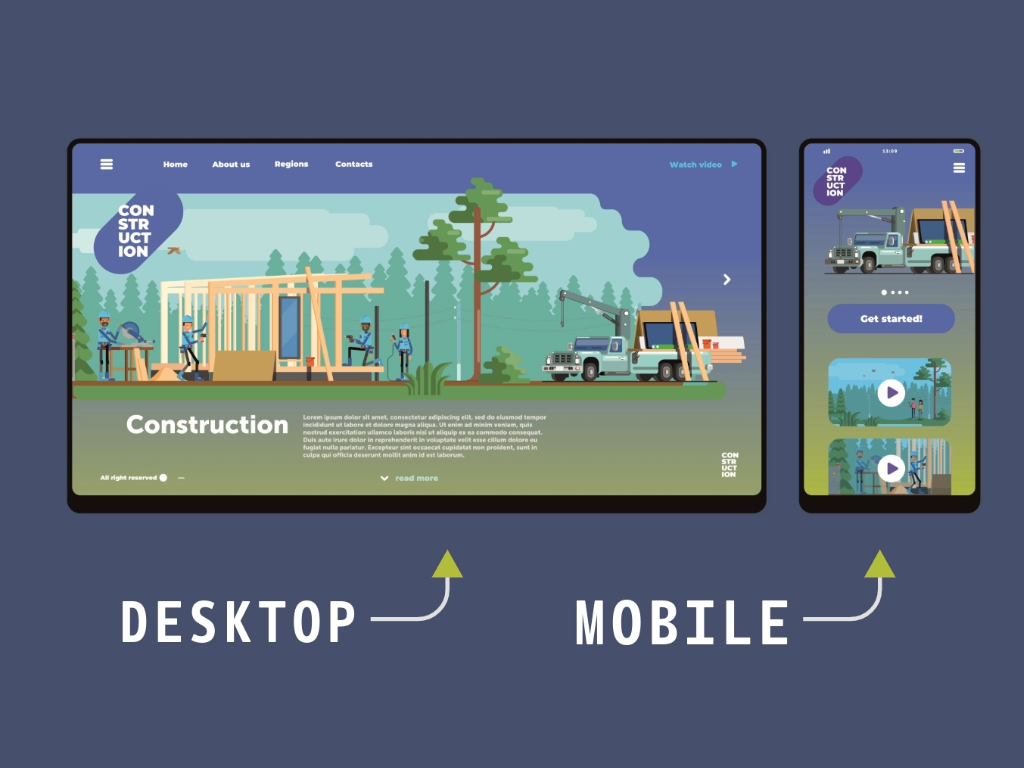Are Digital Displays Equal? Not by a long shot.
Table of Contents
Digital displays have become an integral part of today’s advertising and marketing landscape. From billboards to video walls, digital displays allow brands to reach their target audience in a visually engaging way. One of the most popular forms of digital displays is billboards. Billboards are large, outdoor advertising structures that can be seen by people driving or walking by. They are typically located on busy roads, highways, and in high-traffic areas such as Times Square.

Billboard Basics
Digital billboards are becoming increasingly popular as they allow for more dynamic and interactive content to be displayed. For example, digital billboards can display real-time information such as weather and traffic updates, making them more engaging for the viewer.
Interactive displays are also becoming increasingly popular in advertising and marketing. These displays allow customers to interact with the content displayed on the screen, such as by using touch or motion sensors. Interactive displays can be used to create engaging and interactive experiences for customers, such as virtual try-ons for clothing or virtual tours of a property. Another popular form of digital display is video walls. Video walls are typically used in retail environments, such as shopping malls and airports, to showcase products or services in a visually engaging way. They can also be used in public spaces, such as museums and galleries, to display artwork or other visual content. Video walls can be made up of multiple screens, or they can be a single large screen, and they can be used to display a wide range of content, including video, images, and animations.
Mobile usage has become the norm, and businesses that fail to optimize their digital presence for mobile will be left behind.
Jack Ma, Founder of Alibaba
The most popular modes of digital displays
- LED displays: These displays use light-emitting diodes (LEDs) to create bright, vibrant images that can be seen from a distance. They are often used for outdoor advertising, such as on billboards and Times Square.
- LCD displays: These displays use liquid crystal technology to create images. They are often used for indoor digital signage, such as in retail stores and airports.
- OLED displays: These displays use organic light-emitting diodes (OLEDs) to create images. They are known for their high contrast and wide viewing angles. OLED displays are often used in smartphones and other mobile devices.
- Interactive displays: These displays allow users to interact with the content on the screen, such as through touch or voice commands. They are often used in museums, trade shows, and other public spaces.
- Projection displays: These displays use projectors to display images on a screen or other surface. They are often used in conference rooms, classrooms, and other settings where a large screen is needed.
- Transparent displays: These displays are transparent when they are turned off, and when they are turned on, the display appears. They are often used in retail store windows, museum exhibits, and other settings where the display needs to blend seamlessly with the environment.
- Flexible displays: These displays can bend and flex, enabling them to be used in a variety of new forms and applications. They are often used in wearables and other portable devices.
The Influential World and Digital Displays
Our generation has become a generation of digital screens due to a combination of technological advancements and societal shifts. Technology has played a significant role in the rise of digital screens. The development of the internet, smartphones, and tablets has made it possible for people to access digital screens anytime, anywhere. The rapid advancement of technology has also made digital screens more affordable and accessible to the masses.
Societal shifts have also contributed to the rise of digital screens. The way people consume and interact with media has changed significantly in recent years. With the proliferation of social media and the rise of on-demand content, people are spending more time on digital screens than ever before. The internet and digital screens have also changed the way we communicate and interact with each other. Platforms like email, instant messaging, and social media have made it possible to stay connected with friends and family all over the world, and digital screens have become an integral part of our daily lives. Additionally, the rise of e-commerce and online marketplaces has made it easier than ever before to shop and make purchases online, further increasing the amount of time we spend on digital screens. Lastly, the use of digital screens has also been encouraged by the business world, digital screens and digital devices have become a key tools to reach new and existing customers and to improve the customer experience.

The Influencers
Why Do We Rely So Much on Digital Screens?
We rely heavily on digital screens for a variety of reasons. One of the main reasons is that digital screens are highly convenient and accessible. They are portable and can be used anytime, anywhere. With the widespread availability of smartphones and tablets, people have constant access to digital screens and can use them to stay connected and informed.
The rise of mobile usage has completely changed the way we consume and interact with digital content. It's no longer just about having a website, but about having a seamless and optimized mobile experience.
Mark Zuckerberg, CEO of Facebook
Another reason why we rely so much on digital screens is that they offer a wide range of functionality. Digital screens can be used for entertainment, communication, work, and education. They also allow us to access a vast amount of information and resources, which can be easily searched and shared. Additionally, digital screens offer an interactive and engaging experience, which can be used to create more personalized and meaningful interactions with users. Digital screens also allow for targeted advertising and marketing campaigns, making it easier for businesses to reach their target audiences. The ability to track and analyze user behavior allows companies to optimize their campaigns and improve their ROI. The ability to collect and analyze data from digital screens helps companies and organizations make informed decisions, which is crucial in today’s digital age. This can be used in a wide range of industries such as healthcare, transportation, retail, and many more.
Cities with a known high advertising budgets
- New York City – New York City is home to many major advertising agencies and is considered to be the global leader in advertising. The city’s advertising industry is worth billions of dollars and attracts many of the world’s top brands.
- London – London is considered to be the second most important advertising market in the world. The city is home to many major international brands and is a major center for media and advertising.
- Los Angeles – Los Angeles is home to many major entertainment and media companies. The city’s advertising industry is worth billions of dollars and attracts many of the world’s top brands.
- Tokyo – Tokyo is a major center for advertising in Asia and is home to many major Japanese companies. The city’s advertising industry is worth billions of dollars and attracts many of the world’s top brands.
- Shanghai -Shanghai is a major center for advertising in Asia and is home to many major Chinese companies. The city’s advertising industry is worth billions of dollars and attracts many of the world’s top brands.
- Paris – Paris is considered one of the most important advertising markets in Europe. The city’s advertising industry is worth billions of dollars and attracts many of the world’s top brands.
- Hong Kong – Hong Kong is a major center for advertising in Asia and is home to many major Chinese and international companies. The city’s advertising industry is worth billions of dollars and attracts many of the world’s top brands.
- Mumbai -Mumbai is a major center for advertising in India and is home to many major Indian companies. The city’s advertising industry is worth billions of dollars and attracts many of the world’s top brands.
- Singapore – Singapore is a major center for advertising in Asia and is home to many major international and regional companies. The city’s advertising industry is worth billions of dollars and attracts many of the world’s top brands.
- Sydney – Sydney is a major center for advertising in Australia and is home to many major Australian and international companies. The city’s advertising industry is worth billions of dollars and attracts many of the world’s top brands.




